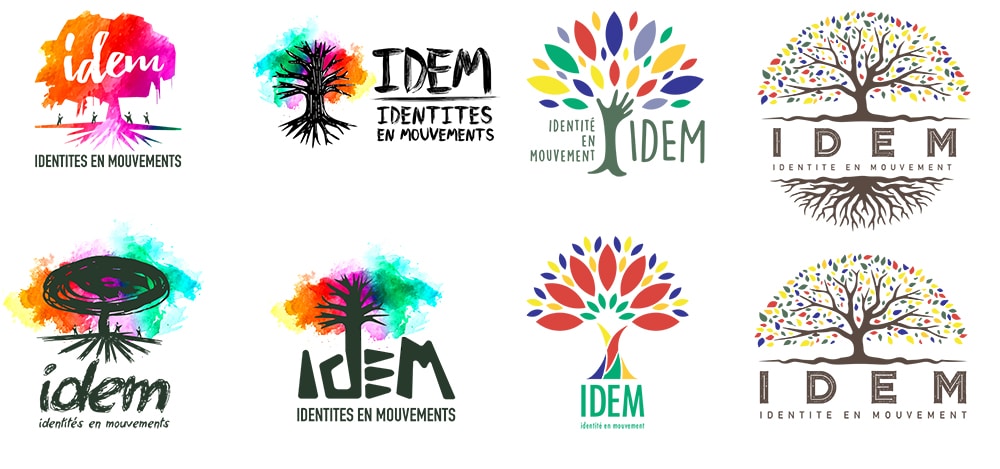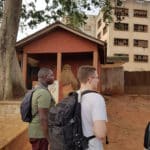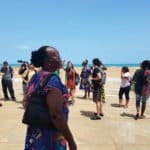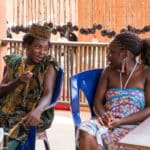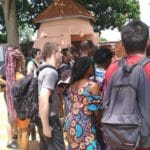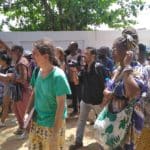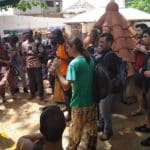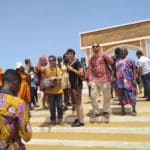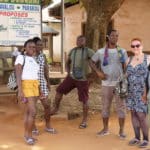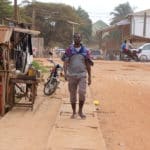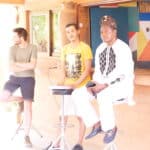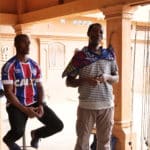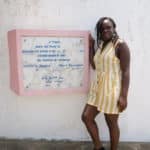
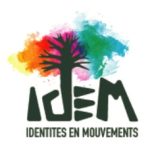
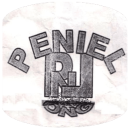

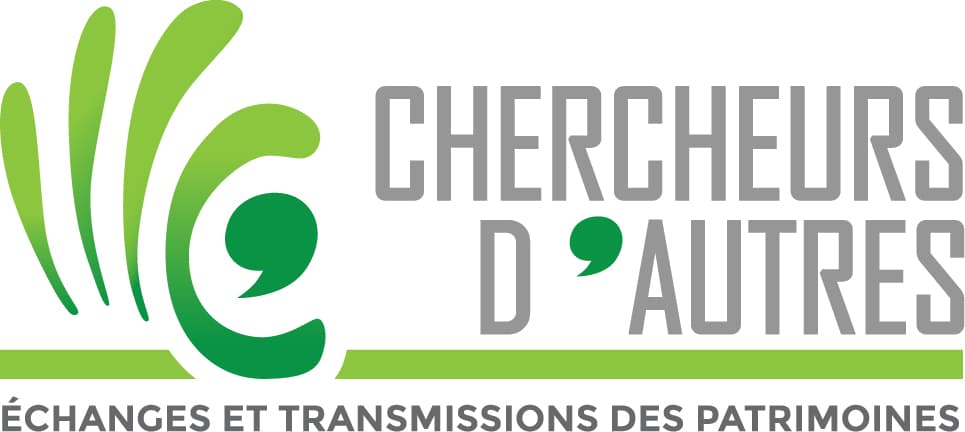
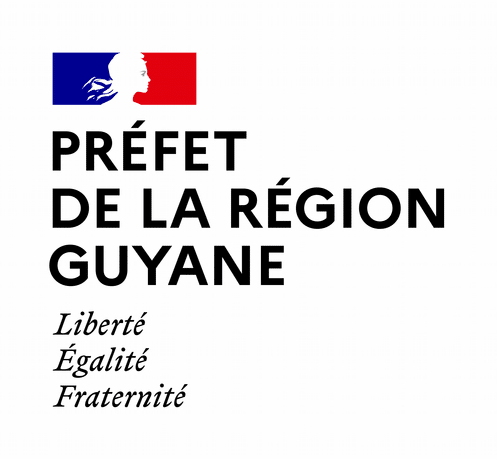
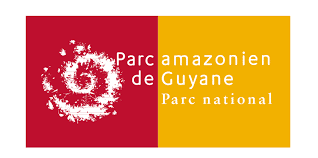
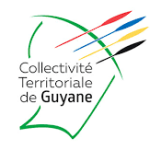
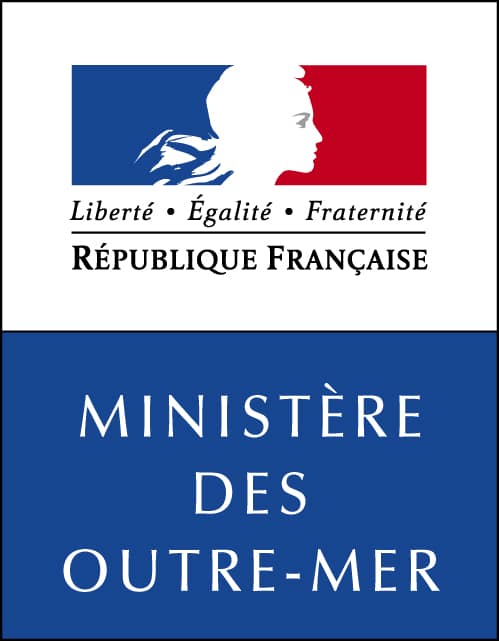

Erasmus+ program
KA2 – Capacity building in the field of youth
Coordinator
Identities in motion / IDENTITÉS EN MOUVEMENTS (IDEM)
Le projet « Identités en mouvements » (IDEM) explore une histoire commune à trois continents, celle de la traite négrière du commerce triangulaire qui a conduit à la déportation de 12,5 millions d’Africains entre les XVe et XIXe siècles. Cette première mondialisation tragique impacte encore dramatiquement les relations internationales tout autant que les équilibres internes de nos sociétés. Cependant cette histoire a aussi accouché d’une fusion culturelle inouïe qui a bouleversé la culture mondiale, générant la plupart des courants artistiques qui définissent nos cultures contemporaines (jazz, blues, rock, rap, salsa, samba, etc.).
Créolisation du monde, transculturation : les essayistes ont tenté de caractériser ces transformations culturelles dont chacun d’entre nous, à divers degrés, est aujourd’hui le dépositaire. C’est le fil de cette histoire culturelle que notre projet tente de remonter, sous le prisme d’une exploration de la part profondément métisse de nos identités : ne faut-il pas les comprendre aujourd’hui comme des identités-relations, au carrefour de soi et des autres, d’ici et d’ailleurs, et déterminées par nos engagements, nos pratiques et nos goûts autant qu’héritées ?
This project gathers 4 partners from Africa, South America and Europe (Péniel in Benin, Pierre Verger Foundation in Brazil, Chercheurs d’autres in French Guiana, and Samba Résille in France). This project is a 4 steps path, for teams composed by young people, artists and youth workers. Each step is defined like a place for intercultural meetings and a technical and artistic laboratory centered on what the team, from its knowledge and skills, can share and build together. The aim is more especially the meeting between traditional arts and new technologies (creation and dissemination), and therefore the project has the following objectives:
• découvrir des cultures originales (vaudou-yoruba au Bénin, candomblé au Brésil, bushinengué en Guyane) et identifier leurs relations à travers des cours structurés, des expositions et des moments d’immersion (cérémonies et festivités traditionnelles) ;
• développer des compétences techniques dans le domaine audiovisuel à travers la réalisation d’un webdocumentaire (réalisation, prise de son, interviews, diffusion web grâce à l’outil Klynt) ;
• créer librement à partir des expériences capitalisées (fresque d’art tembé dans l’espace public toulousain, création photonumérique et vidéomapping sous la direction du photographe toulousain Stéphane Lepenant).
Partners
![]()
“The creation of the Pierre Verger Foundation was the result of two of my passions: one that I feel for Bahia and another for the African region along the Bight of Benin. Its goal, as expressed in its mission and activities, is to emphasize their common heritage, offering to Bahia information about Benin and Nigeria and to inform the latter two about their cultural legacy in Bahia,” Verger stated in the FPV’s first newsletter.
As founder, staff member and president, Pierre Verger donated his entire personal research collection, accumulated over decades of travels and study, also sustaining the Foundation with his own financial resources. The library contains more than 3,000 books and numerous scholarly articles. The photo archives include 62,000 negatives. The Foundation also possesses many sound recordings, films and videos, and a precious collection of documents, index cards, correspondence, manuscripts and objects.
Created in 1988, the Foundation is legally constituted as a private non-profit organization, with resources coming from royalties of Pierre Verger’s works, contribution from its members and potential donations. From its very beginning and to this day, it functions in a house located on the Ladeira da Vila América, Pierre Verger’s home for more than 30 years, in the heart of Pelourinho, in the city of Salvador de Bahia, Brazil’s former capital.
The objectives of the Foundation are to preserve and disseminate the work of Pierre Verger, to serve as a center of information and research by making its collection publicly available (library, photo collection and Verger´s personal archives). It’s about establishing and maintaining cultural, human and scientific exchanges between Brazil and Africa, to write publications on this subject and to provoke interdisciplinary cooperation between anthropology, history, music, arts and botanic. It also has the goal to maintain relations with other cultural organizations interested in afro-Brazilian culture, and to be socially useful in a practical way that is integrated into the local community and adjacent areas, through the activities of it cultural center, dedicated to the promotion of afro-Brazilian culture.
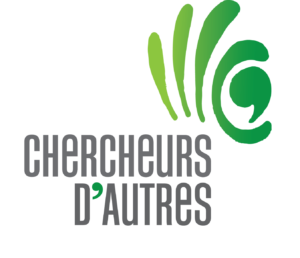
Chercheurs d’autres is an NGO created in 2008. It goal is to create links between close or distant cultures. Its actions tend to promote a better mutual understanding, equity and a “living together” through a better knowledge of each person‘s reality. To accomplish its mission of passing on cultures, the association is located in France (Toulouse) and in French Guyana.
Chercheurs d’autres wishes to hand down the material and immaterial cultural heritage which draws the identities and particularities of populations through productions allowing the inhabitants to speak, and which also are the opportunity to meet in a convivial and festive way on different territories with local partners. To achieve that, the association uses different medium (exhibitions, concerts, conferences, workshops, trainings, pedagogical booklets) and chose more especially filmmaking, with the production of several short films, documentaries, and a feature film rewarded in France (“Anuktatop : la métamorphose”, 2015).
Since 2010, the association is also committed in an international exchange project, “The Triangle of cultures”, which aims at organizing mobilities for young people and adults thanks to an approach of discovery, open mindedness, training and professionalization. The methodology of the association leans on the systematic participation of the participants in the process of creation, realization and dissemination, with the idea of improving the social and professional skills of each participant. The reciprocity of these collective projects aims at improving the economic, social and structural conditions of all the concerned territories.
Péniel is an NGO which has the goal to give to everyone a useful tool to act in Benin, by implementing actions on the following fields: culture and training, environment, health, production and development. In each field, Péniel has specific objectives: • culture and training: promote cultural events (accommodation, touristic guides, excursions, concerts, catering) / promote education, training, recycling / participating in the feminine awareness by giving essential documents; • environment: create the favorable conditions for a change of mentalities and daily behaviors / show young people the obligation they have to protect and preserve their environment / do urban works like dredging works, cleaning gutters, waste collection, street and garden maintenance, laying cobblestone; • health: raise awareness on STD thanks to concerts in partnership with other NGO; • production: promote farming, supporting agricultural material, promote cooperative gathering / encourage actions boosting the strengthening of links between the informal sector and the small and medium size companies; • development: promote all the actions of development by taking into account a participative diagnostic / provoking the participation of women in the sustainable development. To reach these goals, Péniel has an operational strategy leaning on sessions of information, education, communication, works in urban space, organization of cultural events, supplying equipment to the cooperatives of women and textbooks to vulnerable children and young people.
Mobilities
From April 20 to 26, 2019
The promotion of a source culture
The 4 delegations made up of 10 young people and workers from each of the partner structures, Péniel (Benin), Chercheurs d'Autres (Guyana), Pierre Verger Foundation (Brazil) and Samba Résille as coordinator, went to Porto-Novo.
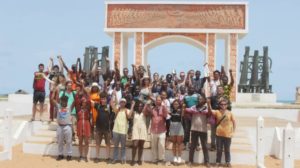
From October 21 to 27, 2019
The challenges of cultural mixing
The "Identities in Movement" project explores a history common to three continents, that of the diffusion of African cultures throughout the world, and their fusion in contact with other civilizations. In this vast process of "creolization of the world" (Edouard Glissant), Brazilian culture occupies a special place, and after a superb stay in Benin, the IDEM partners find themselves in Salvador Bahia, Brazil.
Welcomed by the Pierre Verger Foundation (famous French anthropologist photographer), the teams of Samba Résille (France), Peniel (Benin) and Chercheurs d'Autres (Guyana) immerse themselves in Afro-Brazilian culture (candomblé, samba de roda) and try to understand how Brazilians live their Africanness today.
The "Identities in motion" project is an international cooperation project coordinated by Samba Résille and funded by the European Union under the Erasmus+ program - KA2 - Cooperation in innovation and exchange of good practices - Capacity building in the field of youth.
From February 17 to 23, 2020
Traditional knowledge and new technologies
Third stage of this journey, the mobility in Guyana takes Samba Résille to meet the Bushinengués, descendants of maroon slaves who took refuge in the forest and adopted the way of life of the Indians of Amazonia. Intrinsically mixed, but also terribly threatened in its balance by metropolitan exploitation projects and cultural pressure, Bushinengue society tries to find the point of balance between traditional way of life and openness to the outside world.
This mobility brings together 4 teams of 10 people per structure. It is designed as a space for strengthening the cultural, artistic, technical and managerial skills of staff and will focus particularly on the challenges of reconciling lifestyles, traditional knowledge and the techniques and knowledge of contemporary societies.
The training will include:
• artistic practice workshops around the Bushinengué culture (Tembé art, song and dance music);
• technical training modules (documentary, interview, communication and webcasting);
• information and discussion sessions around the bushinengue culture;
• immersion visits in the bushinengue culture with awareness of environmental issues.
September 27 to October 3, 2021
Free creative experimentation
4th and last stage of this journey, the reception of our partners in Toulouse aims to synthesize the research previously carried out in Africa and South America, with a highly creative and festive dimension: Tembé fresco project on the walls of Samba Résille, photonumeric and musical creations, partnership with the national season of contemporary art Africa 2020 etc.
This welcome week mobilizes a team made up of young people (4 people/structure), 4 youth workers/structure and 2 staff/structure (administrative, accounting and communication management). It is designed as a space for strengthening the cultural, artistic, technical and managerial skills of staff and is particularly committed to making the collaborative work carried out during the project effective and tangible.
Carried out jointly by the staff of Samba Résille and partners, the welcome week includes:
• assistance with the creation of a Tembé fresco by Guyanese artists;
• digital photo editing and videomapping modules under the direction of Stéphane Lepenant and other Toulouse collaborators (ISPRA);
• musical creation modules around the notion of shared heritage;
• support for partner teams (tourism, shared meals, festivities, etc.);
• the exhibition of the results of the workshops as part of the Africa 2020 season;
• the closing seminar of the project.
Testimonies
Alukus from French Guiana and Benin, Simonet looking for his ancestors Mobility Benin 20-26th of april 2019
A brief history of the Alukus from Guiana The ancestors of the Alukus from Guiana were slaves from West Africa and lived in hiding (“marroner” in french), they ran away from the plantations where they were help captive. They were hunted and had to fight to keep their freedom. The “marronage” was to resist the slavery, and also “to reconstitute themselves, to start over”, Simonet will say.
Hidden in the forest, these newly free persons built themselves a new identity, from various African ethnic groups, and integrating their ordeal of slavery. Their language is partially reconstructed and renewed. The slaves didn’t have the right to speak their language, some elements were lost, and others were brought by members of various ethnic groups. As for religion, way of life, music, songs… All these parts of culture were transformed because of the conditions of life of the slaves (separation of families, prohibition of some practices…) and of the fusion of the cultures of the members of the different ethnic groups gathered in the escape.
On the run, the Alukus took refuge in the jungle where they met the Wayanas, Native Americans from the Amazon rainforest. The Wayanas helped them to adapt to life in this environment. Then, the Alukus set up on the edge of the Maroni River.
In Guiana, “Bushinengue” is a generic term to name various ethnic groups whose ancestors were the “negmarrons”: Alukus (or Boni), Saramaca, Paramaka, Djuka (or Aukan). The Bushinengue represent 70 000 people in Guiana and 120 000 in Surinam. They don’t recognize the border between the 2 countries.
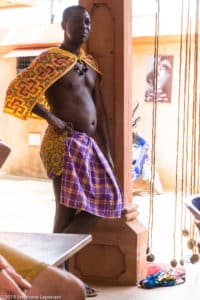 > Premières connexions
> Premières connexions
First connections
Since its first awakening in Benin, Simonet Doudou, member of the Guianese team and traditional chief Aluku in the village of Boniville on the Haut Maroni, installs a temporary cult place near a tree, very close from the building we sleep in. He conducts a brief ceremony, to ask the ancestors from Benin and from the Haut Maroni to help us succeed this project.
After breakfast, we are going to work in a cultural center called « Ouadada », which means « Welcome » here. In Maroni, we say “Ouada” to welcome the tourists, and the artist name of Cécilon Dada, another participant of the mobility, is « Ouadada »! Similarities that promise others…
During the afternoon, Gérard, manager of Ouadada, takes us to a tour of the voodoo squares of Porto-Novo, rehabilitated through his center and highlighted by Beninese artists. A voodoo priest conducts a little ceremony and invites Simonet to make a wish. He will tell us later that he wished to meet the Alukus from here. He notices also the proximity between the funeral rituals between here and there: “We don’t have so many things but the result is the same”. And he notices the similarity between the King that we visited at the end of the day and the “Grand Mon”.
Searching the Alukus in Benin
The following day, as we were walking in the capital to discover the afro-brazilian architectural heritage, Simonet talked with a Beninese woman on the market. She confirms that there are indeed “Alukus” in the city.
On the day after, the teams go to Ouidah, the city from where the slaves were leaving. For many participants, this day was really emotional. Tread on these places makes vibrate the human beings that we are, question our origin, our history, our identity, participate in our personal trip. Many participants, like the Alukus in Guiana or the Brazilian people, have ancestors that suffered these ordeals and lived the terrible crossing. Here, the history of human kind marked by the slavery resonates with the history of the individuals.
On our way back, Simonet says to us that he really wants to meet the Alukus from Benin before he gets back. He wants to “take some news from the family”. And at night, the Guianese team plays its traditional drums to thank the divinity for their welcome.
The meeting
Thanks to Gérard, the manager of the Ouadada center, a meeting is organized between Simonet and one Aluku from Benin. Two people from Samba Résille, Simonet, Gérard and our “intermediary” go to a bar in the city. We learn that the person we are waiting for is called “Minakode Aluku”, and is a deputy really appreciated by the population.
Simonet tells us a little bit more about his ancestors. In Guiana, the Alukus kept the memory of the names. They got deported in Surinam, ran away, were being hunted down. They fought back with some weapons, knives, sabers and… mysticism. When they were hiding in the forest, they met the Boni, they are now one family. These slaves, coming from the north of Benin, were warriors. Then the Alukus met the Wayanas while they moved back up the river to go to a safer zone. There were a few conflicts between them, but finally they got along and support each other.
The deputy Aluku arrives. Simonet tells him the story of the Alukus in Guiana, says the names of the villages where they live, that they created. An honorable hug follows and Simonet gets out his traditional outfit as Gérard explains the IDEM project. The deputy does not speak French, Gérard translates for him. The deputy clarifies that he is really happy to see us. The context of the elections in the next days does not allow him to do as much as he would like to, he assures that he will go to Guiana to meet his family. He is really touched by Simonet’s approach and would have loved to present him the different branches of the Alukus. Simonet is really moved. The deputy tells him that the voodoo will go to him.
The deputy does not speak French, Gérard translates for him. The deputy clarifies that he is really happy to see us. The context of the elections in the next days does not allow him to do as much as he would like to, he assures that he will go to Guiana to meet his family. He is really touched by Simonet’s approach and would have loved to present him the different branches of the Alukus. Simonet is really moved. The deputy tells him that the voodoo will go to him.
For the deputy, it’s thanks to the voodoo that the Alukus are tolerant, and if they take care of it, they will be rich. Simonet talks about the wood and the gold in the Aluku Guianese territory, that they cannot take advantage of. But now that Simonet came, he is going to be rich because “the voodoo brings wealth”, assures the deputy. Simonet misses the words: “The words I said have to be more important than the words I forgot to say”. For him, the ceremony he did when he arrived produced “a good effect”. Simonet describes Boni, who fought with the Alukus, who took care of the women and the children, and was a great warrior. He talks about the river “Aluku Liba”; it’s the conquest that gave the river its name. « le vodun apporte la richesse », affirme le député.
We take the car and we are drove to the library “United leaders of Mededjonou”, of which the deputy is a big sponsor. A primary school teacher comes to present it to us.
Then we leave and we head for the villages near the border with Nigeria to get to the deputy’s house. We recognize it immediately: a big building with 3 floors next to small houses. On the terrace, portraits of parents, uncles and aunts of the deputy, attract attention. He presents them to us and Simonet takes pictures of them. After entering the living room, the deputy comes and goes, and we understand that he changes his planning (the elections happen in 2 days) to welcome Simonet. Then, he invites us in a small room outside, where he shows us different potteries representing his ancestors.
While we are about to get back to the Oudada center, where the other participants are preparing our international diner, they announce to us a new meeting…
A royal moment
After the deputy, we are drove to the king of the Alukus, more precisely like written on the entrance of the palace: “His majesty Kpotéhoun Allanmakoun 18th king of Adjarra, enthroned the 19th of october 2018”. Another inscription lists all the kings of Adjarra that preceded him, until the founder Attawa, who reigned from 1722 to 1749.
> Un moment royal
Après le député, c’est chez le roi des Alukus que nous sommes conduits. Plus précisément, comme l’annonce l’inscription à l’entrée du palais : « Sa majesté Kpotéhoun Allanmakoun 18eme Roi d’Adjarra, intronisé le 19 octobre 2018 ». Une autre inscription liste tous les rois d’Adjarra qui l’ont précédé, jusqu’au fondateur Attawa, qui a régné de 1722 à 1749.
After his enthronement, the king spent a few months in a voodoo convent, and he is here since 3 weeks ago. The salutation to the king is with bended knees, with the head tilted to the ground. Simonet says to him that he is happy to meet him because he didn’t expect it, and tells him his search: the Aluku deputy they told him about, the confirmation by the lady in the market… So he said to himself that thanks to the grace of gods, he would try to meet him. In Ouidah, he asked the guide who said that he would try to help him, his trust got stronger, and he talked about it to Gérard from Ouadada and to Hamza from Samba Résille. The meeting was not planned; Simonet would have wanted to give him a present.
The king asks him to bend his knees and he blesses him (Gérard is translating). “May the gods protect your life, may the gods make your home happy with joy and wealth”. Then the king blesses the deputy who allowed this meeting with Simonet: “May God gather you, you won’t forget each other and you will get along forever”. The king blesses the group, wishes us a comeback in peace and that “our stars shine eternally”.
The sharing
We get back to the Ouadada center, with the deputy who accepted our invitation, to share with the other Aluku members of the project, but also to share this meeting with the participants. Because this mobility in Benin has been conceived like a return to the culture source and this reunion of descendants of common ancestors in the African continent is a beautiful symbol of it.
And after a few moments of formal exchange, this improvised meeting is happening in the more spontaneous and natural way: dancing and following the rhythm of the drums!
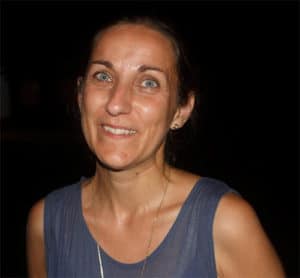
Beyond words...
In the interstices of mobility
Brazil, 20-26 October 2019
No Brasil, toda criança que ouve um tambor responde com seu corpo. / In Brazil, every child who hears a drum responds with his or her body. Dona Cici
In Benin, during the first mobility of the IDEM project, we were able to observe the limits of language. In the groups from Toulouse, Guyana and Benin, few members speak Portuguese and, on the Brazilian side, the same goes for French or English. What could be more frustrating for people who come together and are really willing to exchange? Spontaneously, intuitively, to communicate is to speak… The desire to know, to question, to explain. In the short time allowed for the mobility, the comprehension of words would be more than useful!
However, we know that communication lies largely beyond language: in gestures (that warm way of greeting each other in Brazil), in looks (complicit, seductive, questioning, disturbing, friendly, impenetrable, admiring), in movements (taking a place, leaving one’s place, touching one’s face, placing one’s hand on the other’s arm), in breaths, smiles and sighs (of heat, irritation, fatigue, relief). At the heart of our cultural and artistic practices, we also play with the sometimes impenetrable nature of language, by singing songs whose meaning we don’t always understand because we lack the culture that would allow us to understand them. We let ourselves be carried away by the melodies and rhythms.
Moreover, a language is not limited to words, it is imbued with music, with tones, cadences, syncopations, harmonies, tempos, energies, silences. According to Carlos Barros, our singer-guide during the Pelourinho’s visit, Bahia’s “sung speech” comes from the Fon and Yoruba languages of Benin. If the words have been forgotten, the memory of the melody of these languages has been perpetuated.
Despite slavery, spatial and temporal distance, the bodies have also kept the memory of rhythms and gestures, of dances. Thus, many of us were amazed by the connivance between Beninese and Brazilian people, the understanding of the names of the deities even before the translator opened his mouth, the extreme similarity of the rhythms, instruments, dances and religious rites that we were able to observe throughout this mobility in Salvador.
Communication through language remains of infinite richness, but its limits in this project lead us to take a step aside to pay particular attention to what happens beyond words and in particular to be attentive to emotions and sensations, ours and those of others. To what makes us react or simmer, to what intimidates us, frightens us, makes us uncomfortable, shakes us, agitates us, reassures us, to what makes us dizzy, to what annoys us, makes us angry, attracts us, get us passionate or makes us laugh, to what excites us, inspires us, galvanizes us. Accepting this overflow of emotions when we attend a candomblé ceremony for the first time, or those tears that well up when learning a song (the meaning of which will only be understood when we translate it when we return). Noticing that one rhythm makes us shake while another let us indifferent, to be delighted that I get along with this person whose language I don’t understand, to take a new look at a neighbor who was previously perceived as hostile. Detecting a face on a facade by the effect of pareidolia, being moved by a connection between a reading and the present moment, being surprised by a play of light and shade. Noting that most French people don’t appreciate okra, the sticky food popular in Brazilian cuisine, while they enjoy acarajés…
Everyone can understand what lurks, what floats, what creates an atmosphere, whether within the framework of the programme or not, because a mobility is also successful thanks to the interstices of discussions, organized activities and visits. There are these little moments of contemplation of the urban landscape while waiting for an Uber, exchanges of glances with the inhabitants of a “peripheral” district, the hesitant curiosity of the children who are waiting for the beginning of their workshop, the delicious silences during meals, the shared relaxation during a cigarette break, this conjuration of tiredness in laughter around a coconut water or a caipirinha. Tiny moments filled with nuggets of emotions and sensations… Everything that I don’t write down in the notebook that follows me everywhere during the mobilities.
© Cécile Benoist, October 2019- KA2 IDEM Project – Erasmus + / Samba Résille
Além das palavras…
Nas lacunas da mobilidade
Brasil, 20-26 de outubro de 2019
No Brasil, cada criança que ouve um tambor responde com o seu corpo. Dona Cici
Já no Benim, durante a primeira mobilidade do projecto IDEM, pudemos observar o seguinte: os limites da língua. Nos grupos de Toulouse, Guiana e Benin, poucos membros falam português e, no lado brasileiro, o mesmo para francês ou inglês. O que poderia ser mais frustrante para as pessoas que se reúnem e têm sede de trocas? Espontaneamente, intuitivamente, comunicar é falar… o desejo de saber, questionar, explicar. No curto espaço de tempo da mobilidade, a compreensão de palavras seria mais do que útil!
No entanto, sabemos que a comunicação está muito além da linguagem: nos gestos (esta forma calorosa de se cumprimentar no Brasil), nos olhares (cúmplices, sedutores, interrogativos, perturbadores, afetivos, impenetráveis, admiradores), nos movimentos (tomar um lugar, sair do seu lugar, escovar o rosto, colocar a mão no braço do outro), na respiração, nos sorrisos e suspiros (calor, irritação, fadiga, alívio). No coração das nossas práticas culturais e artísticas, jogamos também com este carácter por vezes impenetrável da língua, cantando canções cujo significado nem sempre é compreendido porque não temos cultura para o compreender. Deixamo-nos levar por melodias e ritmos.
Além disso, uma língua não se limita às palavras, é marcada pela música, com tonalidades, cadências, sincopações, harmonias, tempos, energias, silêncios. Segundo Carlos Barros, nosso cantor-guia durante a visita ao Pelourinho, a musicalidade do português da Bahia vem dos idiomas Fon e Yoruba do Benin. Se as palavras foram esquecidas, a memória da melodia destas línguas foi perpetuada.
Apesar da escravidão, distância espacial e distância temporal, os corpos também guardaram a memória de ritmos e gestos, danças. Muitos de nós ficamos impressionados com essa cumplicidade entre beninenses e brasileiros, a compreensão dos nomes das divindades antes mesmo de o tradutor abrir a boca, a extrema semelhança dos ritmos, instrumentos, danças e ritos religiosos que pudemos observar ao longo dessa mobilidade em Salvador.
A comunicação através da linguagem permanece infinitamente rica, mas os limites que ela coloca neste projeto levam a dar um passo atrás para prestar particular atenção ao que acontece além das palavras e, em particular, para estar atento às emoções e sensações, nossas e dos outros. Ao que nos faz reagir ou borbulhar, ao que nos intimida, nos assusta, nos deixa desconfortáveis, nos sacode, nos agita, nos tranquiliza, nos deixa tontos, nos irrita, nos irrita, nos irrita, nos atrai, nos inflama ou nos faz rir, ao que nos entusiasma, nos inspira, nos galvaniza. Aceite este transbordamento de emoção ao assistir pela primeira vez a uma cerimónia de candomblé ou às lágrimas que surgem quando aprende uma canção (cujo significado só compreenderá quando a traduzir no seu regresso). Perceber que um ritmo nos faz tremer enquanto outro nos deixa indiferentes, alegrarmo-nos por a corrente ser particularmente forte com esta pessoa cuja linguagem não compreendo, olhar de novo para um vizinho que antes era percebido como hostil. Detectar um rosto numa fachada pelo efeito da paraeidolia, mover-se por uma ligação entre uma leitura e o momento presente, ser agarrado por um jogo de luz e sombra. Note que a maioria dos franceses não aprecia o quiabo, um alimento pegajoso que é popular na cozinha brasileira enquanto desfrutam de acarajés…..
Todos podem compreender o que está a rondar, o que está a flutuar, o que cria uma atmosfera, seja no quadro do programa ou não, porque a mobilidade também se realiza nos interstícios dos debates, das actividades organizadas e das visitas. São estes pequenos momentos de contemplação da paisagem urbana enquanto se espera por um Uber, trocas de olhares com os habitantes de um bairro « periférico », a curiosidade hesitante das crianças à espera do início do seu atelier, deliciosos silêncios durante as refeições, o relaxamento partilhado durante uma pausa para fumar, esta conjectura de fadiga no riso louco em torno da água de coco ou de uma caipirinha. Pequenos momentos cheios de nuggets de emoções e sensações… tudo o que não percebo no caderno que me acompanha por todo o lado durante as mobilidades.
© Cécile Benoist, October 2019- KA2 IDEM Project – Erasmus + / Samba Résille
Traduzido com www.DeepL.com/Translator
Creation of the IDEM logo
During the first meeting in May 2019 on the visual identity of the project, the Visual Art group defined the following "key" ideas:
– A tree is the common point of all our cultures
– Flags, colors to represent our countries, our cultures, our diversities
– Movement as a dynamic or an evolution
– Roots,
– People
Here is the first research submitted to the votes of the participants to guide Stéphane Lepenant, graphic designer, towards the final logo which represents this cooperation.
